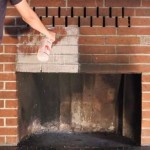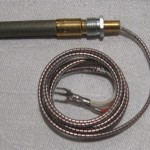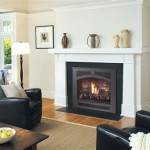Determining the Appropriate Fireplace Grate Size
The selection of a suitable fireplace grate is a critical aspect of ensuring efficient and safe wood-burning in a fireplace. The grate elevates the firewood off the fireplace floor, promoting airflow, which is essential for complete combustion. Choosing the correct size is crucial for maximizing heat output, preventing damage to the fireplace, and maintaining overall safety. Several factors must be considered to accurately determine the appropriate fireplace grate size.
The primary purpose of a fireplace grate is to improve combustion. By lifting the wood, air can circulate beneath and around the logs, providing oxygen to the fire more effectively. This leads to a hotter, more efficient burn, reducing smoke production and creosote buildup. A poorly sized grate compromises this airflow, potentially leading to incomplete combustion and increased maintenance requirements.
Selecting the right size isn't merely about aesthetics; it directly impacts the functionality and longevity of the fireplace. An improperly sized grate can lead to uneven burning, potential overheating of certain areas of the fireplace, and even damage to the firebox itself. Therefore, a thorough understanding of the measurement process and the considerations involved is essential for informed decision-making.
Measuring the Fireplace Interior
Accurate measurement of the fireplace interior is the first and most critical step in selecting the correct grate size. There are three primary dimensions to consider: the front width, the rear width, and the depth. It is crucial to obtain accurate measurements of these dimensions to ensure the grate fits properly and functions as intended.
To begin, measure the width of the fireplace opening at the front. This measurement represents the widest point the grate can potentially occupy. Then, measure the width at the back of the fireplace. Often, fireplaces taper towards the back, making the rear width smaller than the front width. Finally, measure the depth of the fireplace from the front opening to the back wall. These three measurements provide a complete understanding of the available space for the grate.
When taking these measurements, it is important to use a reliable measuring tool, such as a metal measuring tape, and to measure to the nearest inch. Avoid using flexible tape measures as they can easily distort and provide inaccurate readings. Ensure the tape measure is held straight and level to obtain the most precise measurements.
Furthermore, it is essential to account for any obstructions within the fireplace, such as gas lines or protruding brickwork. These obstructions may limit the available space and necessitate choosing a smaller grate size. Documenting these obstructions and their dimensions ensures that the selected grate will fit seamlessly within the fireplace.
Once the measurements are obtained, it's advisable to create a simple sketch of the fireplace interior with the dimensions clearly labeled. This sketch serves as a visual aid when shopping for a grate and helps to avoid any confusion or errors in the selection process. This sketch is especially helpful when comparing measurements to the dimensions of available grates.
Selecting the Appropriate Grate Dimensions
Once the fireplace interior measurements are obtained, the next step involves selecting a grate that fits comfortably within those dimensions. A general rule of thumb is to choose a grate that is approximately 6 to 12 inches shorter than the front width of the fireplace. This provides ample clearance on both sides of the grate, allowing for easy loading of firewood and optimal airflow.
The depth of the grate should also be considered in relation to the depth of the fireplace. Ideally, the grate should not extend more than halfway into the fireplace. This allows for proper airflow around the wood and prevents the grate from interfering with the back wall of the fireplace. A grate that is too deep can restrict airflow and lead to incomplete combustion.
The rear width of the grate should also be less than the rear width of the fireplace. A grate that is too wide at the back may not fit properly or may restrict airflow. It is important to ensure that the grate sits securely on the fireplace floor without wobbling or shifting. Stability is a crucial safety consideration.
In cases where the fireplace is unusually shaped or has significant obstructions, it may be necessary to consider a custom-made grate. Custom grates can be fabricated to fit specific dimensions and accommodate any unique features of the fireplace. While custom grates are typically more expensive than standard grates, they provide the best fit and ensure optimal performance.
When comparing grate dimensions, it is important to pay attention to the manufacturer's specifications. Some manufacturers may provide overall dimensions, while others may provide dimensions of the burning area. Ensure that the measurements being compared are consistent to avoid any discrepancies. It is also helpful to read reviews and feedback from other customers to gain insights into the actual performance and fit of the grate.
Considering Grate Style and Material
Beyond size, the style and material of the fireplace grate are important considerations. Grates come in various designs, including traditional bar grates, angled grates, and arched grates. The choice of style depends on personal preference and the aesthetic of the fireplace. However, some styles may be more efficient than others at promoting airflow and combustion.
Traditional bar grates consist of parallel bars that support the firewood. These grates are simple and durable, but may not provide optimal airflow. Angled grates are designed with a slight incline, which helps to direct heat forward into the room. Arched grates have a curved shape that allows for more even distribution of heat. Ultimately the choice depends on the user's preference.
The material of the grate also plays a significant role in its durability and performance. Fireplace grates are typically made from cast iron or steel. Cast iron grates are known for their durability and heat retention properties. They are able to withstand high temperatures and provide consistent heat output. However, cast iron grates can be more brittle and prone to cracking if subjected to sudden temperature changes.
Steel grates are lighter and more resistant to cracking than cast iron grates. They are also typically less expensive. However, steel grates may not retain heat as well as cast iron grates. The best choice of material depends on the frequency of use and the desired level of durability and heat retention.
Regardless of the material chosen, it is important to ensure that the grate is constructed from high-quality materials and is designed to withstand the high temperatures of a wood-burning fire. Look for grates that are made from thick-gauge steel or cast iron and that have reinforced welds. A well-constructed grate will last for many years and provide reliable performance.
In addition to the main grate material, consider the type of finish applied to the grate. Some grates are coated with a heat-resistant paint or powder coating to protect them from rust and corrosion. This coating can extend the life of the grate and maintain its appearance. However, it is important to choose a coating that is specifically designed for high-temperature applications to avoid any potential off-gassing or discoloration.
Ultimately, selecting the appropriate fireplace grate size involves a combination of accurate measurement, careful consideration of dimensions, and a thoughtful evaluation of style and material. By following these guidelines, it is possible to choose a grate that optimizes airflow, promotes efficient combustion, and enhances the overall safety and enjoyment of the fireplace.

What Size Fireplace Grate Steel Heart Forge

Wooden Burning Stove Grate Cast Iron Heavy Duty Fireplace Indoor Chimney Hearth China Log Made In Com

Fireplace Grates For Westchester And Nyc

How To Measure

Fireplace Grates Guide Woodland Direct

How To Measure For A Fireplace Grate Woodlanddirect Com

How To Measure For A Fireplace Grate Woodlanddirect Com

Stainless Steel Fireplace Grate Pilgrim Home Hearth

Liberty Foundry 22 In Cast Iron Heavy Duty Fireplace Grate With 2 Clearance G22 Bx The Home Depot

How To Measure Your Fireplace
Related Posts








